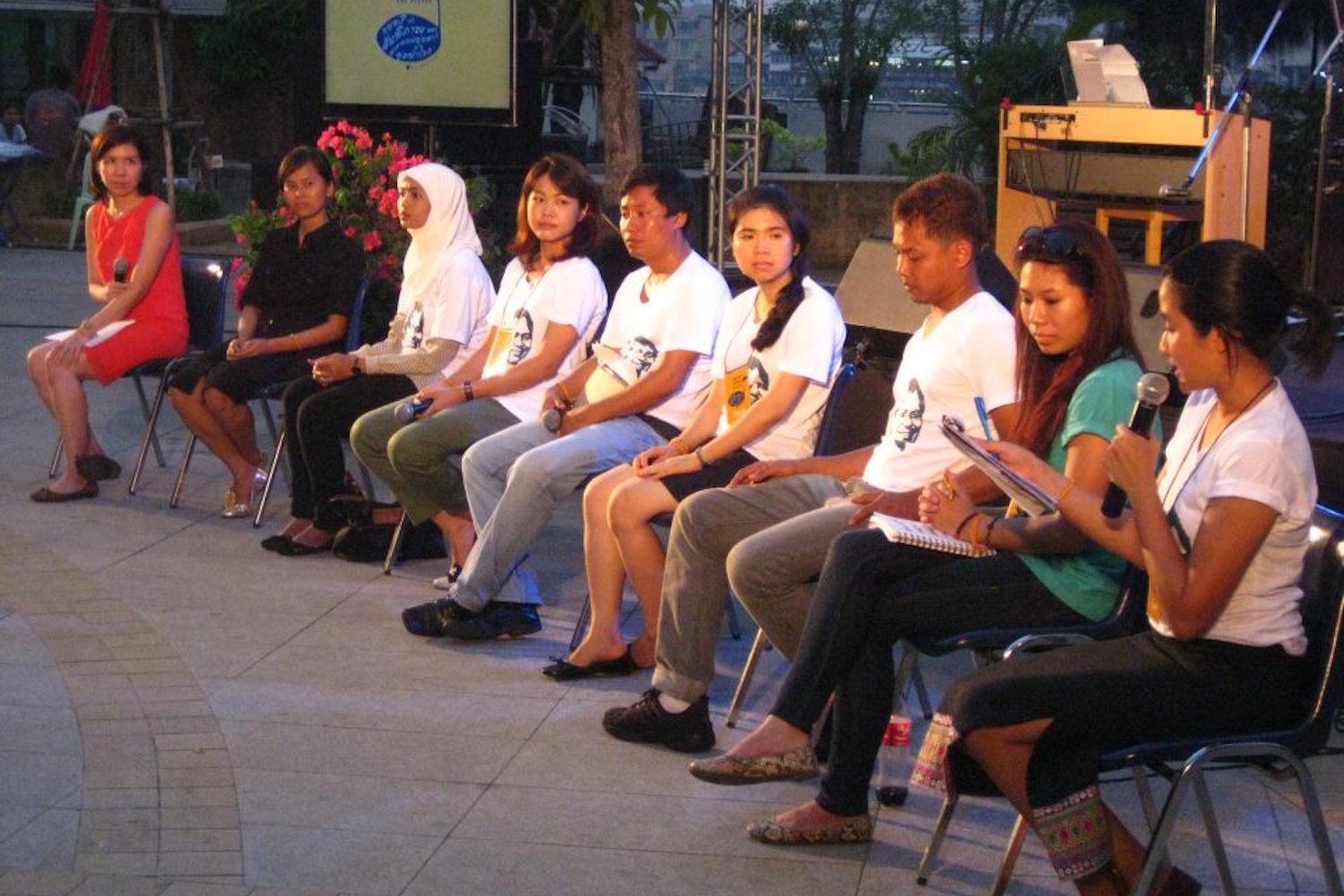The Nation: 16 December 2014
The Laos government claims to care about its citizens. Now is the time to prove it.
Silence over the disappearance two years ago of community activist Sombath Somphone is a stain on the national conscience.
On the evening of December 15, 2012, Magsaysay award winner Sombath Somphone was seen getting out of his jeep and walking into a police outpost on Thadeua Road, Vientiane. Video from a traffic camera shows that a car with flashing lights then arrived, Sombath was escorted to it by unidentified men and then driven away from the scene.The video clip, available on YouTube and other websites, has been viewed by people around the world many times over the past two years. Lao authorities, meanwhile, have announced several times they are investigating Sombath’s disappearance, but on each occasion they have been unable to demonstrate any progress on the case to the public and his family.The international community, including the United Nations, has voiced concerns over his disappearance and pressured the government in Vientiane to make greater efforts to solve the case.Sombath had dedicated his life to the development of his motherland and the betterment of his fellow citizens, particularly the poor. He is a model Lao citizen with a deep love for Laos that he expressed in actions.
In the early 1970s, he received a scholarship to study at the University of Hawaii where he received a BA in Education and an MA in Agriculture. With these qualifications he was free to settle anywhere in the world after the Vietnam War and the fall of Vientiane to the communist Pathet Lao in 1975. But he chose to return home so as to help poor farmers improve their productivity. His contribution to Lao society matches that of the most idealistic members of the Vientiane government. In this regard, the government owes him a lot. But his work went largely unrecognised at home, only coming to international attention when Sombath was handed the prestigious Magsaysay Award for community leadership.
The official report into Sombath’s case was delivered by the Laos authorities 18 months ago and immediately drew stinging criticism from the international community for revealing too little was being done to find out what had happened to the activist. Laos authorities may argue that their ability to investigate such a case is hampered by a lack of resources. But what’s really missing is enough pressure applied by high-placed members of the government on those in charge of the case. With a little more encouragement from their bosses, the investigators might just dig up more hints of Sombath’s whereabouts.
The video clip from the traffic camera provides more than enough “leads”. It even shows Sombath in the company of public officials – police at the checkpoint – before they took him away. The vehicle they used and the direction they took are clearly visible.
Sombath’s wife Ng Shui-Meng says that low-ranking police officials initially cooperated with the investigation, handing over the closed-circuit camera footage of the incident. But their attitude changed as soon as soon as news of Sombath’s disappearance was made public, and the family and public have heard nothing from them since.
For the last two years, Shui-Meng, a soft-spoken Singaporean, has been living with the agony of not knowing what has happened to her husband. Despite contacting all the authorities, agencies and individuals she can think of, she is no closer to the truth. Officials have been polite and courteous, but their wall of silence has left her in the dark.
The trail in this case is getting colder, yet it is not too late for the authorities in Vientiane to bring justice to Sombath and his family. The world wants to know where he is, whether he is still alive, who took him and for what reason. The Laos government claims to care about its citizens. Now is the time to prove it.

To get the bottom of this case, we will need to press Vietnam, not Laos